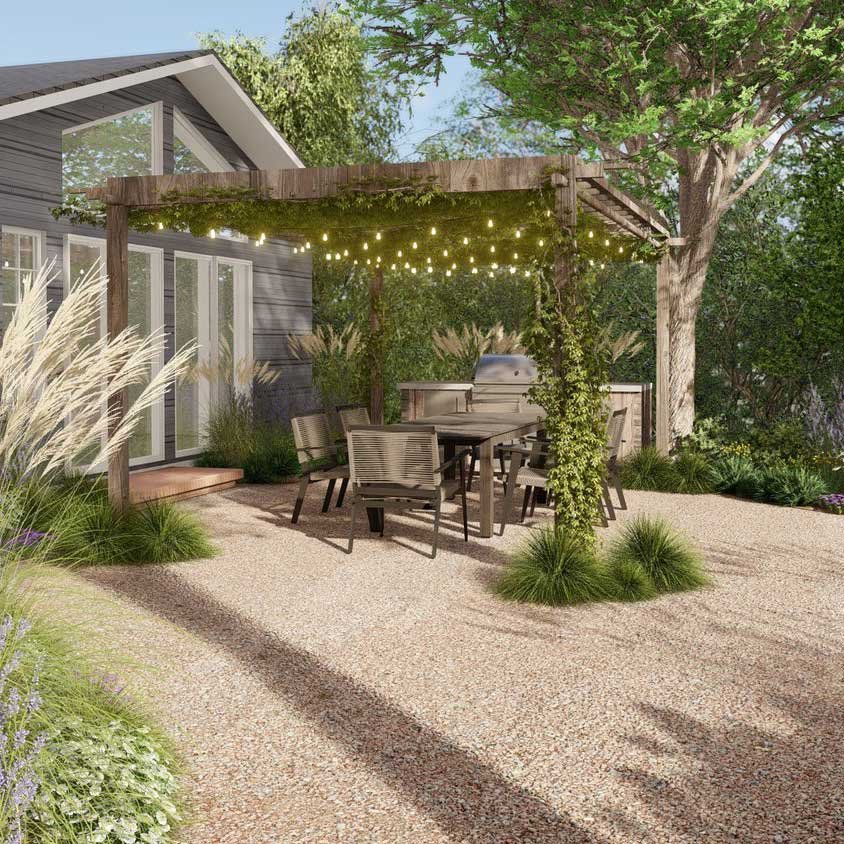Things about Landscapers
Things about Landscapers
Blog Article
The Facts About Landscapers Revealed
Table of ContentsNot known Facts About LandscapersThe Definitive Guide to LandscapersThe Definitive Guide to LandscapersLittle Known Questions About Landscapers.10 Easy Facts About Landscapers DescribedHow Landscapers can Save You Time, Stress, and Money.
- A yard feature where water is represented by an aggregate rock product, generally a gravel or granite.- A stone or flagstone patio, path, or pathway built without a concrete base.- A stone keeping or totally free standing wall surface built without making use of mortar. A highly knowledgeable mason is needed for a completely dry stack stone wall. A lot of wall surfaces in Portland are not dry piled, even if they seem. - An underground structure that collect water and permits it to slow down percolate right into the dirt around it.
Landscape style that is suitable with a sites' environment in both look and sustainability without unfavorable impacts to the atmosphere. Edging in the landscape is a line of separation that develops visual passion in the garden by separating one sector from one more segment.
Areas can additionally have a feeling of "unit" provided by trees, various other plantings, fences, or displays. The landscape near the entrance to a structure.
The Best Guide To Landscapers

The aspect in a landscape style or area in a landscape that is suggested to be most prominent. The focal factor can be a plant, rock, sculpture, gathering space, or other landscape feature.

The smart Trick of Landscapers That Nobody is Talking About
Reduced plants that are allowed or encouraged to spread over an area. Can refer to any type of "difficult" garden aspects consisting of statuary or rocks yet the majority of commonly is used to refer to courses, patios, and walls - Landscapers.: Height difference between the level of water in a pond (or the degree of the pump if it rests outside the pond) and the upper outlet of water which affects efficiency of the water pump in gph (gallons per hour).
A chemical utilized to manage weeds. Fencing boards that run horizontally, commonly made use of in modern-day or Japanese-inspired landscape layouts. Lines that specify areas within a landscape idea. These typically prolong from edges or vital attributes of an existing framework. Appropriate use imaginary lines can assist the landscape feel linked to the home and other components.
Standard PNW landscapes are casual. A plant that spreads even more than preferred, or into environments where it does damages.
Landscapers Can Be Fun For Anyone
Smart irrigation controller reviews and referrals here. 2-D rendering of the suggested watering system. Can include head positionings and insurance coverage, pipe sizing, GPM specifications, and materials required to mount this system. An irrigation strategy is normally unneeded for houses yet prevails for industrial projects. Certified expert that designs landscapes, educated in engineering and design along with in horticulture.
Landscape developers typically have much less education than Landscape Architects and are not accredited. A finished landscape style, describing all elements for the brand-new landscape.
Calcium material used to increase the pH in dirt, which will make it much less friendly to moss (Landscapers). A water tight HDPE material used underneath fish ponds, streams and waterfalls in water functions. Using many growings of the same range to load in an area in the landscape. This can lower upkeep and water use in the yard.
A mix of cement, sand, and water that is used in rock stonework for establishing stones and joints. A layer of garden compost or bark dust used at the base of a plant. A mass growing of moss. A plant that was existing in a geographic area before people started transforming the landscape.
The 10-Minute Rule for Landscapers
Just how the garden or a garden aspect is arranged in connection to an existing link or new function or to an instructions. Maintaining a lawn without making use of chemical herbicides, chemicals, or plant foods. Lawns that are not trimmed yet grown in landscapes as perennials. This is a partly open sided relaxation or leisure area that joins a residence, used for amusing, outside eating and merely taking pleasure in the exterior setting.

Tiny round crushed rock. Plants that offer seasonal interest and afterwards pass away back in image source the winter months. Annuals do not come back the following period, yet perennials do. Winter grass that is one of the most typical turf grass in Portland, OR and the remainder of the PNW.An open roofed structure over a patio or various other landscape feature.
Basalt aggregate ranging in size from 1/4" to dirt. One of the most usual landscape gravel in the PNW. Location of the landscape designed to take care of water till it can soak right into the ground. A chain that controls water as it takes a trip from a roof rain gutter to the ground. Yard structure that develops a planting area that is consisted of and greater than the surrounding quality.
Structure made of timber, concrete, paving stones, blocks internet or other products for stabilizing slopes and protecting against extreme erosion. Slim watercourse. Producing a yard feature consisting mainly of rocks with growings that complement and can prosper in the rough setting. Lawn sprinkler head design that rotates a stream of water across a location.
The Buzz on Landscapers

Report this page